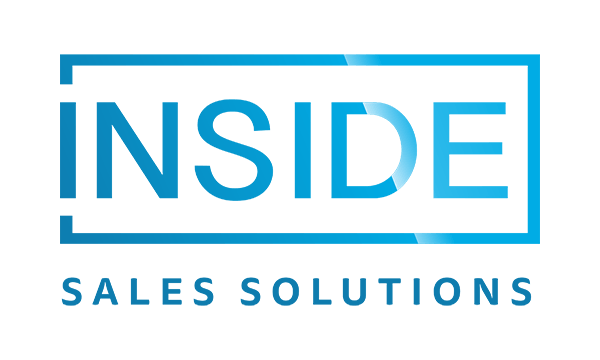
7 Step Framework Overview
- Account Profile
- Buyer Persona
- Sales Process
- Customer Conversations
- Demand Engine
- Training and Certification
- Ongoing Coaching
Account Profile
When it comes to identifying your ideal account profile the vast majority of marketers and sales professionals think the key is defining:
- Who they are (demographics)
- How they think (psychographics)
- What technologies they use (technographics)
- How they behave (behavior)
- And where there are (environment)
All of these questions are important, but to go from good targeting/good account profile identification to exceptional targeting, there’s another question to be asked…
Who should you NOT be targeting?
Just like having a to-do-list you can have a do-not-do list. The same thing can be applied to targeting.
If you never make it clear to your sales organization who you should NOT be targeting, they are going to run into a lot of accounts that fit into gray areas. They could easily rationalize some of these accounts that are somewhat in their account profile so they end up targeting them. This can waste 30 to 90 days with no chance of that deal ever closing!
The better scenario is to be clear on both ends — Who are we targeting? But also, who are we NOT targeting (at least right now)? This way when your sales team is going after the addressable market you have defined, they optimize their time to focus on the accounts that matter most to your business. Nothing breaks down your sales machine like poor targeting. Reps are going to be pointed in all sorts of different directions instead of the streamlined focus that predictably turns a lead into a customer in a given time frame.
The key takeaway here is to identify who you should be targeting and who you should not be targeting. Don’t assume that your sales team knows this. Something that you might want to take into consideration is having a quarterly training on this subject. You want to make sure your organization is hyper-aligned on who you are going after as well as who you are not going after.
Tip: Be transparent with your sales organization. Explain the ‘Why’ behind a good target account and why some accounts would be a challenge for the organization. This is especially important with a Sales Development Representative’s role who’s responsibility is to open the door to your best accounts.

Buyer Persona
Once you have established your ideal target accounts, you have to know who makes the decisions within those accounts. This could be considered your buyer personas or buyer profiles. Understand who are the players in the sales cycle, what are their objections, how do you talk to each one differently? This dictates your sales process.
Marketing and Sales MUST be aligned here. When marketers create Buyer’ Personas that are not driven by the feedback from sales, they build a persona that sales see as little to no value. You should set a buyer persona on reality, not guessing or assumptions.
To implement this in real life, interview both your best customers and prospects. You should ask them:
- What are they responsible for?
- What are their biggest challenges?
- How do they see you helping them overcome their challenges?
- What are their objections?
- Do they have feedback to improve your process or solution?
Tip: interview your buyer persona’s right after you complete the sales process with them. Whether you’ve won or you’ve lost, you gain insightful information that helps you improve on your solution and your process to deliver that solution.

Sales Process
Rarely do the stars align and no matter what you say or do, people are ready to sign on the dotted line. The fact is, sales is a process. Although a fail-proof sales technique is as common as a unicorn, there are tactics that you can apply to increase the likelihood of getting the ‘yes’ every time you approach a new lead.
By definition, a sales process is a “repeatable set of steps your sales team takes with a prospect to move them from an early stage to a closed customer. A good sales process helps your reps consistently close deals by giving them a framework to follow”,
Like any business process, your sales process needs to stay fluid in order to always stay relevant. Consistency creates success but it can also cause complacency if you don’t keep your eye on the big picture.
The steps below to build or revamp your sales process are simply an outline you will need to fill based on the market you are in, your own business needs, customer actions, and what your competition is up to. Observing the tactics that work and led you to a closed deal is key at each step. Take note of conversations, meetings, and emails that most commonly lead to better results than others at each step of the process.
1. Prospect
Prospecting is the process of sourcing new leads that fall in the Account Profile and Buyer Personas you identified earlier in the process. You can prospect by asking current clients for referrals, by purchasing a database solution or using sites like LinkedIn and Quora.
This is a vital part of the sales process and part of the daily/weekly workflow of most reps.
2. Research
Research is never a do-it-once sales task. It is something you want to continually do at each step of the sales process to learn more about your prospect. This education helps you create a tailored approach that will appeal most to your buyer persona’s pain point or need.
3. Connect
Now that we know who we are after, it’s time to connect with them. Connecting can take many forms – email, social media messages, or picking up the phone and cold-calling. After analyzing thousands of campaigns, we have found that an integrated approach focused on appointment setting works best.
4. Present
A typical stage is to run a formal presentation or demo what is being sold. This should be tailored to meet the prospect’s unique needs. Advise: start with a quick introduction first to qualify your prospect before presenting. This is a time-consuming stage that should be saved for well-qualified prospects.
5. Address Objections
As you are observing your sales staff, there will be common bottlenecks or objections you come across based on account and buyer profiles. A good sales process takes into account any objection the prospect might have from pricing to timing and addresses them.
This brings us to the part in the process that is the ‘high’ in every sales person’s day…
6. The Close
Now that you have found a mutually beneficial ground, it is time for the ask. After all the time spent up until this point, ‘the close’ should be a no brainer… but it isn’t always. This is where your sales process comes in handy. Take note of what conversations at this stage have increased the likelihood of getting to a close and use those powerful tools to get to your end goal.
Customer Conversations
Once you have your process established, now it’s time to execute on it. In sales, this means having the right conversations, with the right people, at the right time for the right reason. This is an art! To be able to execute on this successfully, you need to think about the buyer journey that your buyers are going through.
- How do they learn about new solutions?
- What made them consider you?
- Do they have an active pain or need they are familiar with?
- Who else may they be looking at?
- What are they thinking as they are going through each step of their buying process?
- What is the value that you bring forward?
- How can you prove it?
Whether you call it a sales matrix, sales battle cards or a script, you need to have a tool that your reps can use to understand how they can get the right message to their buyers based on the business problem you’re solving, the buyer persona your addressing, and the stage in the sales process.
Demand Engine
Related: Meet your 2019 Quota Numbers by Outsourcing a Portion of Your B2B Sales Efforts
When it comes to building a B2B demand engine your goal is obvious: help sales grow revenue. You do this by creating a consistent, high performance, predictable, lead-to-revenue engine.
Demand engine is really boiled down too reverse engineering your numbers:
- The revenue number you need to hit?
- Average deal size?
- What are your conversion rates at each step of the sales cycle?
The conversion rates from marketing spend, to leads, to opportunities, to closed deals will dictate the activities and investment needed to meet those goals. You should know these numbers like you’re a VC investing in a startup. Demand generation is definitely a data-driven strategy. It is an engine that bridges the gap with your company’s sales and revenue operations. If you don’t know these numbers, you can’t back into your number intelligently.
Tip: Note where the gap is between sales and how marketing is enabling your sales team. Knowing the gaps will help give marketers a sales driven direction in what content or aid they may need to create in order to improve your conversion rates.
Training and Certification
The rest of your strategy now revolves around training everyone on the sales process, the buyer journey, and the conversations you have identified will help in the conversion process. Training is something that you may already know how to do, however, one thing you should be doing after your training is certifying your representatives – ‘inspect what you expect’. This means conducting tests at the end of training to make sure they are ready to execute properly.
Are they talking about what you want them to talk about? Are they executing the demo in the way you’ve laid out within guidelines and bumpers…In essence, are the reps drinking the kool-aid…are they doing everything that was taught to them. Certifications and reinforcements are where your strategy will either rise or fall. If you don’t do certifications and reinforcements you won’t realize what is being retained by your sales reps.

Ongoing Coaching
To put the nail in the coffin of your sales strategy you need never-ending coaching. This is coaching on everything that you have trained on, targeting, buyer persona, conversations, messages, and tactics.
When you coach someone, their skill level starts to increase and then it may take a dip. You may notice that your representatives may revert back to the baseline. When you have ongoing coaching their skill level will continuously increase. Think of this process as a graph with a line spiking up and then slowly going down and then back up. This is what continuous coaching does. By the end of the year, their skills are at the top compared to where they were at the beginning of the year.
If you don’t have a checklist or a scorecard for scoring calls, sit down with each of your sales representatives for one hour per week and get a sense of what they are dealing with, what are their challenges are, and what steps they take to overcome them. In these sessions, spend more time listening than talking or coaching. From there, you can prescribe your solution that will directly resonate and aid your representative.
Building a concrete strategy takes multiple resources and help from both the sales and marketing team. Finding out how to execute your strategy specific to your goals can be a challenge itself. Let us take the weight off your shoulders by helping you build a strategy that will help you “hit the number” set for the new quarter in 2019. By leveraging our one-stop solutions for sales, marketing, and channel solutions you get to go autopilot while we work with your partners and distributors to find what fits best into your goals and strategy so you can convert more leads into opportunities.

![Constructing a Solid Sales Strategy in 2019 [Step-By-Step]](https://isaless.com/wp-content/uploads/2019/01/new-year-3667925_1920-1080x675.jpg)
